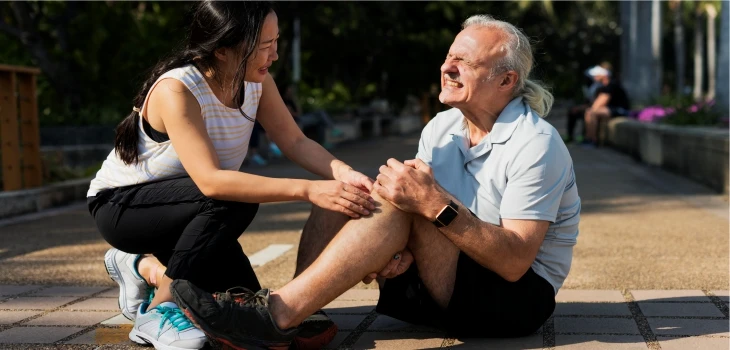A degloving injury is a severe type of traumatic event where the skin and underlying tissue separate from the underlying structures, such as muscles, blood vessels, or bones.
The term “degloving” is used because the injury can result in the affected body area appearing as if the skin has been peeled off like a glove, exposing the underlying structures.
If you or a loved one have suffered such a horrible accident through the negligence of another, a Fort Myers personal injury lawyer may assist you gain compensation through pursuing a personal injury or wrongful death case.
Because of the severe injuries and potential for damage awards, insurance companies and wrongdoers often resist such cases vigorously. They will help you battle the tactics of insurance companies and their defense attorneys.
How do degloving injuries occur?
Degloving injuries can occur in various ways, such as:
- Motor vehicle accidents;
- Industrial accidents;
- Workplace accidents;
- Other high-energy traumatic catastrophes,
Degloving accident results from a combination of compression, shearing, and tearing forces that cause the skin and soft tissue to separate from the underlying structures. Degloving accidents are invariably serious and result in severe damage to affected tissues, often including open fractures, ruptured blood vessels, nerve damage, and other associated injuries.
Treating degloving injuries may require extensive surgical intervention, including reconstructive surgery, skin grafts, and other procedures. Degloving trauma may also involve rehabilitation and long-term medical care.
Common types of degloving injuries
Degloving injuries can be classified into two main types: open degloving injuries and closed degloving injuries, which refer to the nature of the injury and the integrity of the skin.
- Open degloving injuries occur when the skin and underlying soft tissues are forcibly separated from the underlying structures, resulting in an open wound or avulsion.
- Closed degloving injuries occur when the skin and soft tissues are separated from the underlying structures without any visible external wound or avulsion.
Proper diagnosis, treatment, and management are crucial to prevent further traumatic complications and promote healing. The most common body parts where degloving injuries occur are the legs, arms and hands.
Leg degloving injuries, arm degloving, and hand degloving injuries are complex and may result in long-term consequences, such as disfigurement, functional impairment, and emotional distress.
What Are The Risks Associated With Degloving Injuries?
Degloving injuries pose significant risks to individuals who have experienced them. The possible consequences include infection, soft tissue damage, nerve damage, scarring, and disfigurement. Such injuries may also result in loss of sensation, limited range of motion, and reduced strength or dexterity.
Degloving trauma may also cause emotional and psychological effects such as anxiety, depression, or post-traumatic stress disorder (PTSD).
Recovering compensation after degloving injuries
If a negligent party is responsible for causing a degloving injury, recovering compensation typically involves pursuing legal action against the party causing the injury. Legal action may require a number of steps before the victim is fully compensated:
- Seek Medical Treatment: The first and most crucial step after a degloving injury is to seek immediate medical attention.
- Gather Evidence: Collecting evidence related to the degloving injury is vital for building a strong compensation claim. This may include medical records, accident reports, witness statements, photographs of the injury, and the accident scene.
- Determine Liability: Establishing liability is a critical aspect of recovering compensation for a degloving injury.
- File a Compensation Claim: Your attorney will help you file a compensation claim against the at-fault party or parties, either with their insurance company or through a degloving injury lawsuit.
- Negotiation: After filing a compensation claim, there may be a negotiation process with the insurance company or the defendant’s legal representation to reach a settlement.
- Litigation: If negotiations fail, it may be necessary to bring suit in court and try the matter before a judge and jury.
Full compensation may include economic losses such as medical bills, lost wages, and compensation for permanently diminished earning capacity. Non-economic losses may include compensation for mental anguish, disfigurement, scarring, and pain and suffering.
How Long Do You Have To File A Claim For A Degloving Injury?
In Florida, the statute of limitations for filing a claim for a degloving injury, or any other personal injury claim, is generally four years from the date of the injury. Failing to file within this time will nullify your chance for pursuing compensation.
Need Legal Support? Contact The Berke Law Firm, P.A.
We understand the physical, emotional, and financial toll that accidents can have on your life, and we are committed to providing personalized legal representation tailored to your unique situation. With our expertise in accident law, we will fight tirelessly to hold the responsible parties accountable and seek justice on your behalf.
If you or a loved one suffered life-threatening degloving trauma and have sustained injuries through the negligence of another, schedule a free case consultation by calling 239-549-6689.
